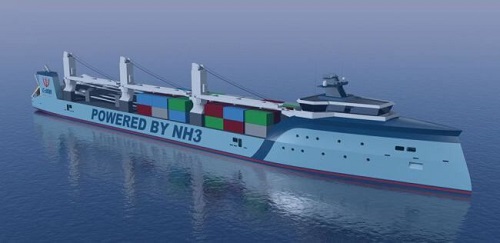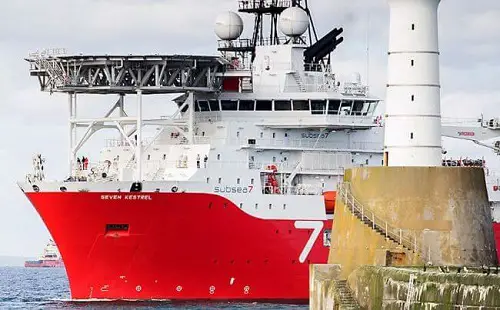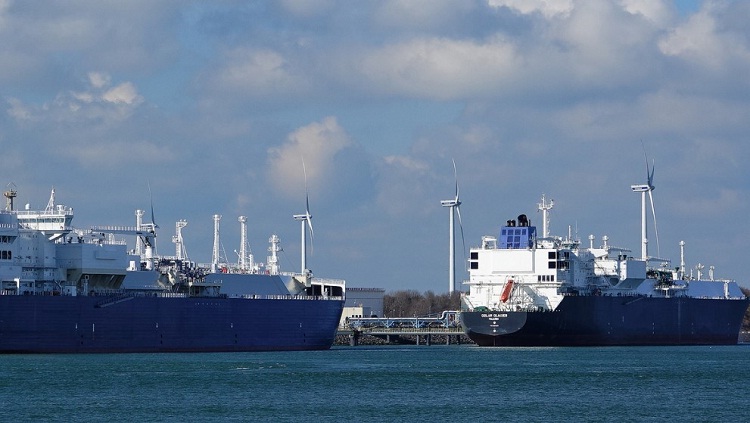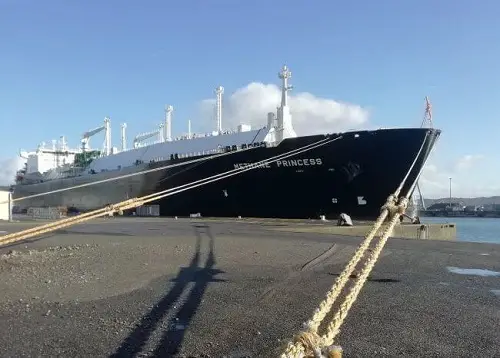C-Job Proposes To Use Ammonia As Ship’s Fuel For Future

The shipping industry is becoming more aware and specific of the fuel and its impact on the environment. What sustainable fuels present is viable and possess realistic possibilities for the maritime sector for future. One option that is just too promising to be overlooked is ammonia, says C-Job Naval Architect Niels de Vries. He adds, “Ammonia is easily sourced and has carbon-free emissions. Furthermore, thanks to the long-standing fertilizer industry, safe working practices are well established.”
Ammonia as energy storage
Using ammonia as a fuel was a main inspiration that emerged from Professor Dr. F. M. Mulder while Niels was following a course at Delft University of Technology. “Renewable energy sources like wind and solar power often provide more energy than the market needs. Professor Mulder put forward the idea that this energy surplus can be utilized to produce – and therefore be stored in – a renewable fuel.”
Niels took this initial concept and developed it into a more tangible strategy. “Using this periodic overcapacity of renewable energy, we can produce ammonia, also known as NH3, by binding nitrogen with hydrogen.” The nitrogen is sourced from existing air separation methods; after all, air is made up of 78% of nitrogen. The hydrogen is produced through the electrolysis of water. “Water and nitrogen are both abundant substances, which makes ammonia a future-proof fuel.”
Potential for propulsion
Using ammonia as a fuel for propulsion technology haven’t created a major picture of the imagination. Niels says, “An internal combustion engine can be used to burn the ammonia. This requires a catalyst to crack a small portion of ammonia into nitrogen and hydrogen. The pure hydrogen ignites and burns with the ammonia,” Niels continues. “This technology exists – in fact, the first ammonia-powered car dates back to 1935 – it just needs to be applied in much larger engines with modern techniques.”
Fuel cells can be used as an alternative. “Proton Exchange Membrane Fuel Cells are commercially available and are used, for example, in submarines in a number of navies around the world. Here, the ammonia is fully separated, and the hydrogen is then used to generate electric power.” Solid Oxygen Fuel Cells can be used as an option where ammonia can be used directly, but using it as a fuel requires further research to check its viability.
Working temperatures
Niels says that the fertilizer industry has more than 100 years of experience working with ammonia when the subject of safety came. “There are well established regulations in the industry that have been set up over the years. Using the knowledge and experience of the people working in this sector one could develop maritime safety standards using ammonia as a fuel. In the terms of storage, this industry already uses large tanks capable of holding 60,000 tonnes of ammonia. Furthermore, large tankers have been used for decades to transport up to 80,000 tonnes of ammonia across the oceans.” Another noteworthy point is that ammonia can be stored in its liquid state at the relatively workable temperature of -33.4°C (at 1 bar pressure).
For balancing the pros and cons of ammonia as ship fuel, one thing should be noted that ammonia weighs twice as much and requires three time more space to contain the same amount of energy as compared to Heavy Fuel Oils. For ammonia-powered ships these type of issues will be considered. In addition, there will be a need to develop a safe and class-compliant ship design as it is well known that ammonia is a toxic substance.
The role of C-Job
“The most challenging aspect, however, is the business case concerning ammonia. At the moment, the maritime industry relies on HFO and MDO, which are the cheapest, but also the most polluting options. The business case for ammonia as a ship’s fuel will have to be supported by regulatory and economic factors in order to progress further.”
It was asked how does C-Job see itself in this long-term picture of ammonia as a fuel? “We think that ammonia could be a viable and promising option for a clean and sustainable fuel,” says Niels. “And our role is clear. Designing sustainable and future-proof vessels – an ammonia-powered ammonia carrier, for example.”
Reference: c-job.com






